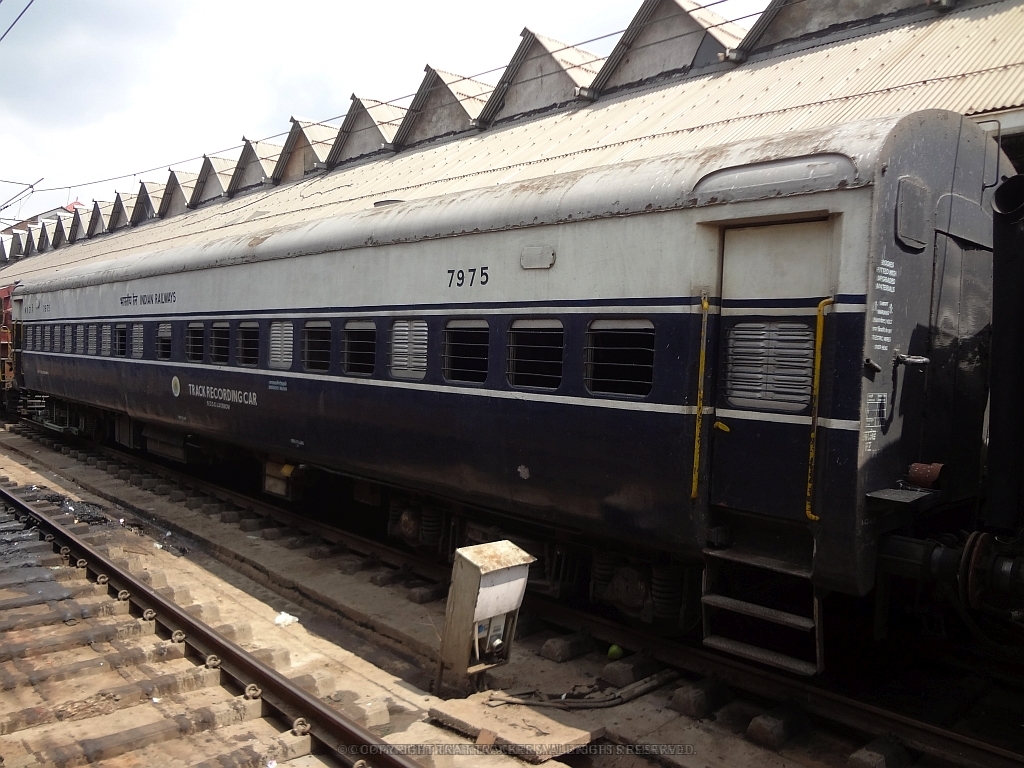
There are two types of track recording cars currently in use in Indian Railways, one mechanical and the other electronic. With these track recording cars, it is possible to have a continuous record of the track geometry under loaded conditions, by running the cars at nominated intervals.
Mechanical Track Recording Car - It has two bogies one of two axles and the other of three axles. The measuring bogie has a base of 3.6 metres, and is three axled with an axle load of 7.0 tons. Type - RZ. It gives a continuous record of - (a) Unevenness - Left rail. (b) Unevenness - Right rail. (c) Gauge. (d) Twist. (e) Curvature/alignment - Left rail. (f) Curvature/alignment - Right rail. (g) Speed.
Unevenness-The longitudinal unevenness of rails is measured as a deviation in the vertical plane (depression or rise) of the middle axle of the measuring bogie with reference to the average position of the two outer axles. The outer axles are spaced 3.6 metres apart and unevenness is recorded to scale of 1:1 on a base of 3.6 M. for left and right rail separately.
Gauge -The changes in gauge are picked up by spring loaded gauge feelers which are in contact with the gauge faces at about 18 mm. below the rail table. The recording is done to a scale of 1:1. The feelers are so made that they can pass over the points and crossings and through check rails at level crossings without difficulty.
Twist - Twist is measured as the relative out of planeness of one of the four wheels with respect to the plane formed by the other three wheels, of the outer axles of the measuring bogie. If, a, b, are the movements of the axle boxes of the leading axle and c, d, are the relative movements of the axle boxes of the rear axle then (a+d) - (b+c) gives the twist over a base of 3.6 M. The points from where these movements are picked up from the frame connected to the outer axles are so located as to compensate for the frame spacing being wider than the gauge. The twist is also recorded to full scale of 1:1.
Curvature/Alignment - Curvature is deduced from the angle between the tangent and a chord of known length at any point of the rail, assumed to be circular. Two spring loaded feelers press against the rails from the tangents. The line joining the centres of the pivots of the two bogies forms the chord. By arrangement of cables attached to these feelers, the differential movement of the feelers with respect to the chord is transmitted to the recording table. The curvature is recorded as versines in mm. on a 7.2 M. chord. This measurement, however, is somewhat vitiated due to transverse play existing between the various parts of the vehicle such as between wheels and rails, between axles and bogie and between bogie and the vehicle. The magnitude of inaccuracy on this account is of a small order and the recording gives general guidance regarding the condition of alignment.


